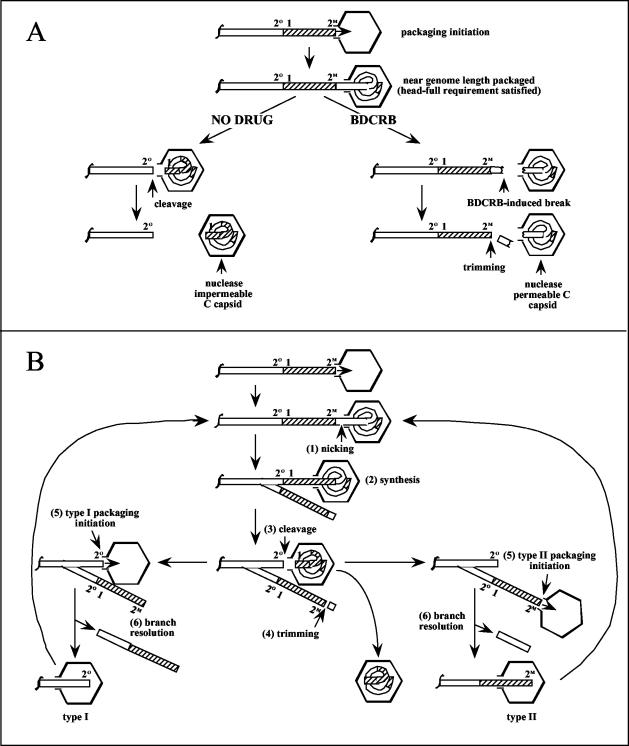FIG. 9.
(A) Proposed model for the BDCRB mechanism of action. DNA packaging initiates on concatemers at pac2-containing right-end termini. Packaging commences until almost a full genome has been packaged, satisfying the head-full requirement. In the absence of drug (left), cleavage is then free to commence at the next cleavage site encountered and the resulting C capsid is sealed to become nuclease impermeable. In the presence of BDCRB (right), heterogeneous breaks occur once the head-full requirement is satisfied just prior to packaging of the left-terminal repeat. The resulting C capsid remains nuclease permeable. Trimming of the concatemer end reconstitutes a right-end terminus suitable for initiation of packaging. The locations of GPCMV pac1 elements (1) and the proposed pac2 elements (47, 49) found at O (2O) and M (2M) termini are indicated. (B) Proposed model for terminal repeat duplication. Packaging initiates and proceeds as shown in panel A. Although for simplicity a type II concatemer end is shown, either type I or type II ends can serve to initiate packaging. As the capsid nears what will become the left-terminal repeat, a nick occurs prior to the repeat (1). DNA synthesis primes at the nick, and the replication fork migrates leftward, copying through the repeat (2). Packaging continues and cleavage occurs at the left end of the repeat (3). Trimming as shown in panel A restores a type II right-end terminus (4). The next round of packaging initiates on either the type I or the type II terminus on the concatemer (5). Resolution of the branched concatemer allows continued packaging while generating small DNA fragments (6). The locations of GPCMV pac1 elements (1) and the proposed pac2 elements (47, 49) found at O (2O) and M (2M) termini are indicated.

